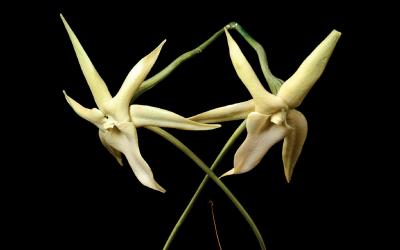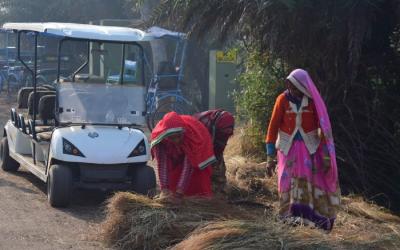India’s forest-dwelling communities have since antiquity utilised various biodiversity elements in forests to augment their livelihoods and fortify their nutritional security. Nowhere is this better exemplified than in the hilly region of the Eastern Ghats, spread along India’s east coast in Odisha, Andhra Pradesh, Telangana, Karnataka and Tamil Nadu.
It is home to several forest-dependent tribal communities, including the Koyas, Konda Reddies, Kondhs, Savaras, Valmikis, Soligas and Parajas. The importance of biodiversity to agriculture dependent livelihoods has assumed greater significance with the new farm laws, which may result in the homogenisation of small farms through private participation, and consequently, the loss of biodiversity.
These tribal communities have distinct lifestyles, livelihoods and agricultural practices linked to forests, as well as varied experiences of changes that have occurred in the landscape.
Their livelihood and economy in this biodiverse, but largely neglected hill region, has been traditionally based on long fallows shifting cultivation of millets, pulses, and vegetables in fields spread over the hills (called podu), collection of local non-timber forest produce (NTFP) and hunting.
The north-eastern ghats of Andhra Pradesh are predominantly inhabited by tribal communities, mainly the Konda Reddies, Koyas and Nayakpods. They have historically been dependant on biodiversity of the landscape for food provisioning and supplementing their livelihoods.
A total of 35 unique forest products have been mentioned by communities in interviews conducted between 2014 and 2017, including 23 NTFP’s that supplied food, medicine, fodder and provided significant cash income.
Most prominent among these forest products are
- Bamboo (for use as fences around houses, myriad utensils and their sale in weekly shandies)
- Edible fruits such as mango and jackfruit
- Firewood
- Gum karaya (Sterculia urens)
- Honey
- Broomstick grass
- Adda (Bauhinia species) leaves (for paper plates)
- Tubers (for domestic consumption)
- Toddy from Caryota urens and Borassus flabellifer (palm toddy)
- Beedi leaves (Diospyros melanoxylon)
- Amla (Phyllanthus emblica) fruits and several wild mushrooms
Besides these, they also collect tamarind, mango, jackfruit, soap nut (Sapindus emarginatus), locally called kunkudukaaya, sheekaya (Acacia sinuata) and karakkaya fruits for sale to local cooperatives GCC. They harvest naramamidichekka (Indian fir or Polyalthia longifolia); collect Ippa (Madhuca longifolia) flowers; fodder for cattle; access medicinal plants and mushrooms, and hunt. They also cultivate cashew nut inside forests in podu lands.
A significant number of these forest-derived products are seasonal and therefore, play a prominent role in enhancing food security during the summer-off season, when agriculture and other sources of employment are not available.
For instance, ippa (Madhuca indica) flowers are widely collected and consumed, as well as used in curries. Additionally, mango and jackfruit, honey, tubers, mushrooms are harvested and consumed fresh or processed and preserved.
Studies have found that tubers and fruits from the forest are rich in vitamins and anti-oxidants, and provide nutritional security. Communities depend on a variety of forest-based livelihoods and produce, including collection and sale of bamboo, wild fruits, firewood, gums and honey during summers.
Thereby, the forests provided communities with livelihood security, which was supported by the government-run Girijan Cooperative Corporation (GCC). It procured Acacia sinuata and karakkaya fruits, gum, honey, Diospyros melanoxylon leaves and Phyllanthus emblica fruits from them.
More recently, some individuals received forest titles to land under the Scheduled Tribes and Other Traditional Forest Dwellers (Recognition of Forest Rights) Act, 2006, and this as secured their land rights.
In recent decades, deforestation and landscape change from the construction of dams, intensified agriculture, timber plantations and mining for bauxite and other minerals in the Northern Eastern Ghats has negatively impacted communities. It has resulted in non-availability or decrease in availability of forest produce.
This has manifested in the lack of trees for building houses, unavailability of gum karaya Sterculia urens, kunkudukaaya Sapindus emarginatus, and honey as the larger gum and nut yielding and beehive preferred trees like Adina cordifolia and Dalbergia sissoo have been cut down.
They now need to travel greater distances to access bamboo and other forest produce. The death of toddy palm trees, because toddy tapping was no longer practiced, has also been observed by communities.
These landscape changes forced people to abandon traditional forest-based livelihoods opportunities and migrate to MGNREGS or employment in seasonal labour work.
Consequently, many villagers shifted to irrigated cultivation in the plains and along foothills to work as farm labourers or seasonal migrant workers in towns during summers. Primary occupations now are largely farming and manual farm / non-farm labour, work in the MGNREGS and in plantations and work in tourist boats.
Bamboo is extracted mechanically from long plantations for supply to paper pulp mills. This has led to a change in land cover. Collection of forest produce as well as cultivation of podu has reduced noticeably.
The GCC has halted the procurement of forest produce like gum, beedi leaves, honey from 2015; with this, the incentive to collect them has been lost.
Communities have been shift away from livelihoods dependent on forests into the plains and towards irrigated farming and urban settings, indigenous knowledge of forest resources. This has put are in danger of being lost.
The importance of forest biodiversity to livelihoods and food security of these communities has assumed significance in the light of the recently legislated farm laws that would allow for large private players to invest in agriculture and sale of agricultural produce outside of registered market boards (mandis).
They may facilitate contract farming and deregulate trade in several major food crops, and the longer-term consequences these would have for biodiversity. These legislations could have several direct and indirect implications on biodiversity in agricultural landscapes, and may result in the consolidation of smallholder farms into large private estates exacerbating loss of biodiversity.




